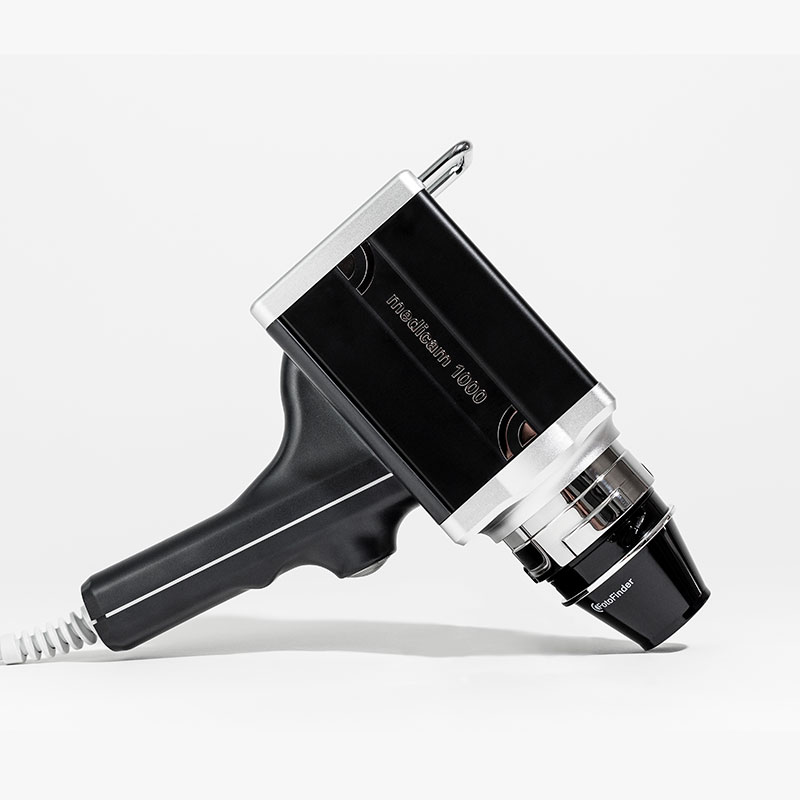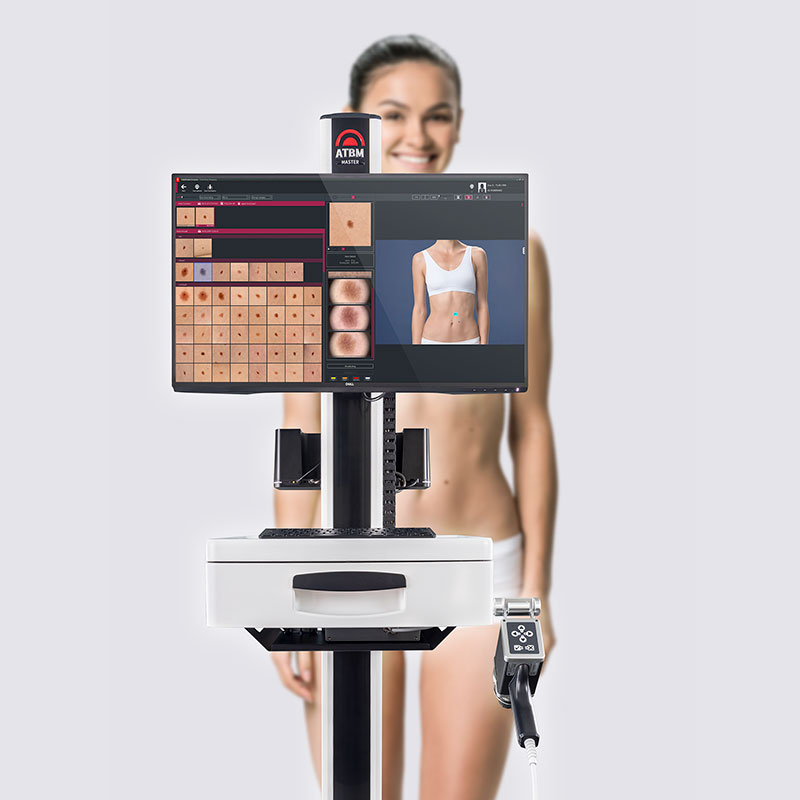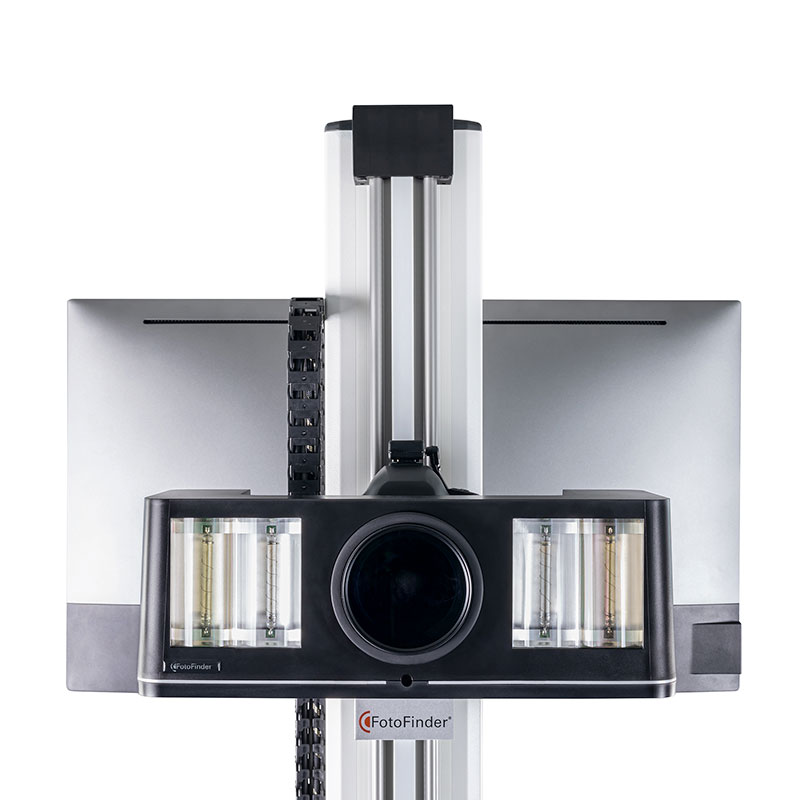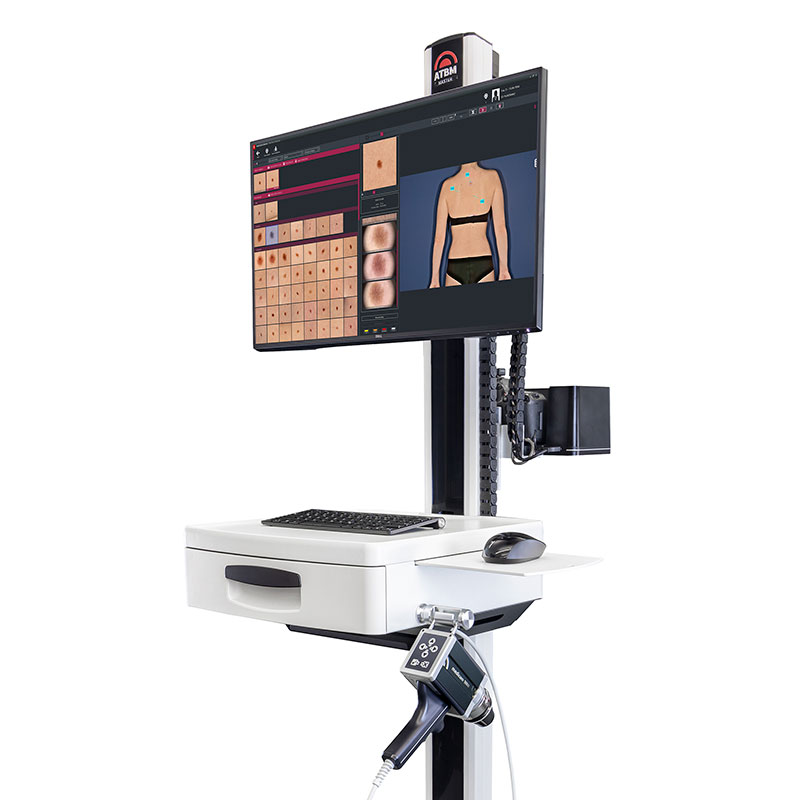
FotoFinder ATBM® Master – a breakthrough in melanoma diagnostics
Marcin Zakrzewski, MD, PhD, owner of Zakrzewscy Clinic, dermatologist specializing in diagnostics and treatment of skin lesions, including skin cancer, was interviewed about this breakthrough solution – FotoFinder ATBM Master.
Doctor, why did you decide to equip Zakrzewscy Clinic with FotoFinder Master?
MZ: The reason is very simple. Early and effective diagnosis of any skin lesion, including melanoma, has always been my priority, as it allows for effective treatment of the disease. I never compromise in this area, so when I found out that FotoFinder had developed a successor to the FotoFinder Bodystudio ATBM II, I did not hesitate. The previous FotoFinder Bodystudio ATBM II system worked perfectly in our Clinic. Both myself and my Patients were extremely happy with it. However, we are lucky that today's medicine develops so quickly, offering extremely technologically advanced diagnostic solutions. FotoFinder Master is undoubtedly one of them, and therefore I decided to equip Zakrzewscy Clinic with it, thinking about my Patients. As a result, it became the first clinic in Katowice, and one of the first in Poland, to offer such advanced equipment.
How innovative is the FotoFinder ATBM Master?
MZ: Above all, it allows for quicker and more precise diagnosis of worrying skin lesions, including melanoma – one of the most dangerous skin cancers. The device’s modern parameters have led to the pioneering Total Body Dermatoscopy technology. First of all, FotoFinder ATBM Master is equipped with a Full HD Medicam 1000 camera, which allows to view skin lesions even in 140 times magnification. The 50.6 megapixel CANON 5DS camera with a reflection-free system takes the highest quality images that allow to assess the nature of the skin lesion based on the clinical image. But the Bodyscan software is what makes the FotoFinder ATBM Master so innovative. With the first-ever use of artificial intelligence in this type of system, all nevus on a Patient’s body are scanned and analyzed by an advanced algorithm. Using the mosaic function and Moleanalyzer Pro software, the system ranks the skin lesions according to their severity. All data is stored in the device’s history, so that the next time the Patient is examined, FotoFinder ATBM Master immediately identifies not only new nevus, but also the smallest changes within current ones. The combination of artificial intelligence with the judgment of an experienced physician is a complete breakthrough in videodermatoscopy and skin cancer diagnosis.
What does this technology mean for Patients and physicians?
MZ: With FotoFinder ATBM Master, we are no longer talking about early melanoma diagnosis, but the earliest. This also applies to other skin lesions, whether they are malignant or not. However, melanoma is our biggest enemy when it comes to skin cancer, and its quick detection, made possible by FotoFinder ATBM Master, provides an almost 100% chance of cure. This device guarantees, both to Patients and physicians, that any disturbing skin lesion will be detected immediately. The newest FotoFinder is the technology we have been waiting for years – it facilitates the work of dermatologists and allows an incredibly fast examination and even faster comparison of lesions. The quality and advancement of this device provides me, as a physician, incredible peace of mind and confidence to help my Patients in the best way possible. Patients of Zakrzewscy Clinic also appreciate the advantages of FotoFinder – the examination is fast, comfortable and the result is clear and understandable.
To whom do you recommend the FotoFinder ATBM Master examination?
MZ: Everyone, actually. Prophylactic examination of pigmented lesions should take place at least once a year. It results from the fact that everyone has skin changes – for example, nevus or hyperpigmentation. Of course, self-examination and cancer prevention are fundamental – I mean watching your body, avoiding excessive exposure to the sun, or using protection against harmful radiation. However, sometimes we are not able to tell on our own if there are new disturbing lesions on our body because they may be in areas that are difficult to observe, such as the back. If someone is not a dermatologist, it is also difficult for them to judge whether the appearance of a particular lesion is normal. The appearance of potentially dangerous skin lesions and diseases, including melanoma, is especially prone to the elderly, but also to those who spend long periods of time in the sun, use solarium, have fair complexions, a tendency to sunburn and freckles. If the Patient notices a new suspicious lesion, an existing nevus changes shape, color or size, or the skin within it changes in any way, I recommend a FotoFinder Master examination.
How does the FotoFinder ATBM Master examination look like?
MZ: The examination is quick and does not cause discomfort. During the examination the Patient should be in underwear and hair should be pinned up so that it does not cover the neck and ears. Then I ask to stand in front of the camera in certain positions and I take photos of your whole body. This step takes a few minutes. All the data is sent to the Moleanalyzer Pro software, which analyzes each change on the skin and presents a map of nevus in the form of a mosaic, grouping them according to possible risks. I also analyze the images, because it is only by combining the artificial intelligence of the device and the knowledge and experience of the physician that a complete clinical picture can be obtained. If a Patient’s history is already present in the Bodyscan software, the system compares it and shows all the changes between the nevus, as well as capturing the newly formed ones. If necessary, I look at the lesion of concern using the Medicam 1000s full HD camera, which allows for a detailed examination of its structures at the cellular level. What is important, the Patient receives a report of the examination – thanks to this, and the conversation with the physician, he or she is able to fully understand the specifics of nevus and make an informed decision about observation or treatment.
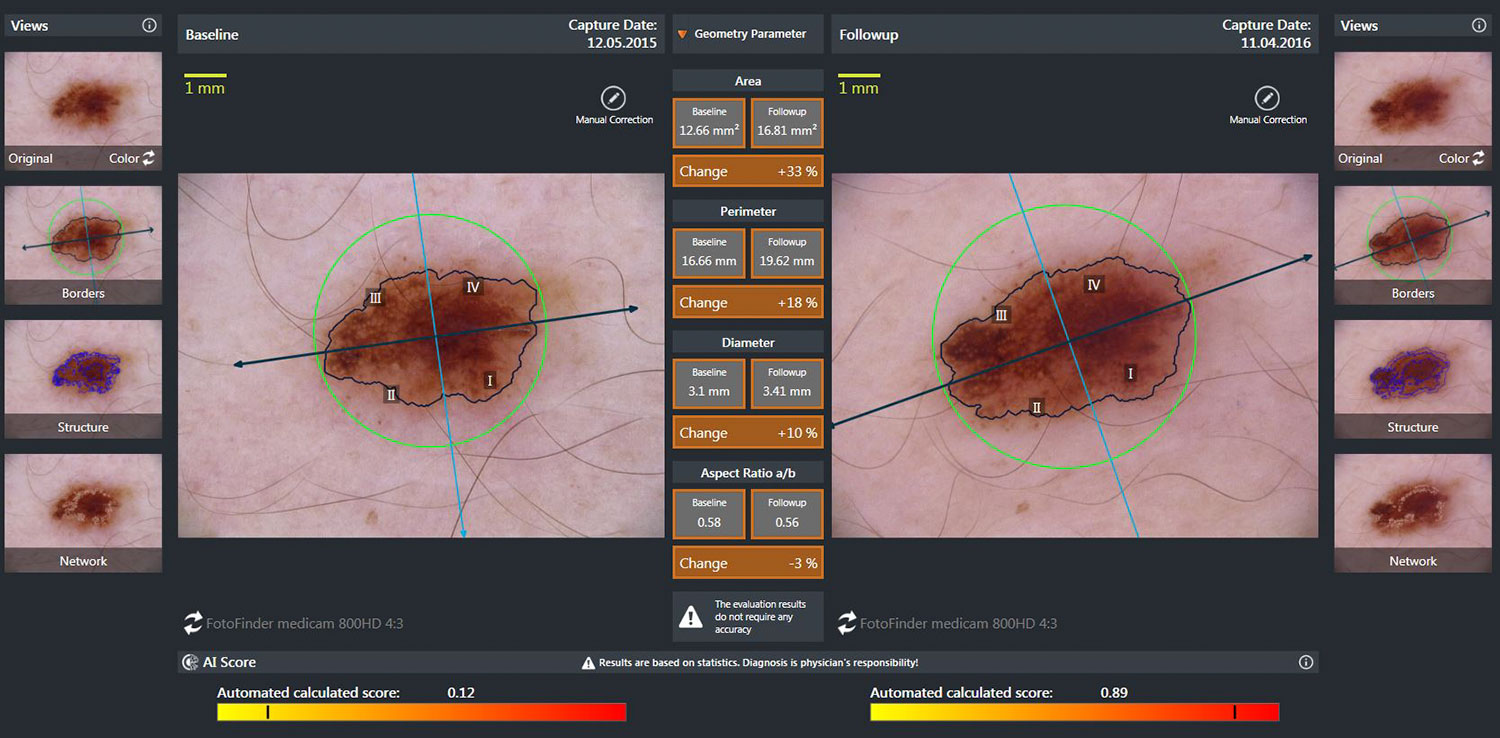
What procedure is implemented if a skin lesion requires removal?
MZ: In such cases I discuss possible ways of treatment with a Patient. In Zakrzewscy Clinic we have all the tools and we cooperate with experienced specialists, what is necessary for effective and safe therapy. If the lesion cannot be unambiguously diagnosed on the basis of the clinical picture, it is necessary to perform biopsy and histopathological examination. In the case of benign lesions, such as fibroadenomas or helminths, the Patient may or may not choose to have them removed. It often happens that these benign tumors cause discomfort or are unsightly – then I recommend their surgical removal or laser therapy with ablative laser Alma Pixel CO2. In both cases the Patient can return to daily activities immediately after removal of the lesion. If we are dealing with a malignant lesion, such as melanoma or basal cell carcinoma, the choice of therapy depends on several factors, such as the stage and the general health of the Patient. Taking all aspects into consideration, I work with the Patient to establish a plan of action, with their health, comfort and needs as the primary focus. In the case of skin cancer the primary goal is complete removal of the lesion – this is possible through treatment or CO2 laser treatment, in some cases photodynamic treatment can also be used. In Zakrzewscy Clinic our Patients can count on comprehensive care, support, safety and professionalism – these are our priorities.
Will it be easier to diagnose skin cancers, including melanoma, thanks to FotoFinder ATBM master?
MZ: Of course, it already is. In fact, with malignancies, early diagnosis is crucial if we want to talk about full recovery. Treatment, i.e. removal of the lesion, is not as much of a problem as a lack of early diagnosis. That is why I always emphasize the importance of observing own skin and anticancer prophylaxis including regular visits to the dermatologist. In recent years I have noticed an increase in public awareness of skin cancer, but it is not yet the state of knowledge I dream of. Too often we underestimate changes on our skin, saying "it’s just a mole, it’s just a sunburn…" and so on. I hope that discussions to make people aware of skin cancer, combined with the early and effective diagnosis made possible by the FotoFinder ATBM Master, will preserve the health and lives of many Patients.
How should I prepare for the test?
On the day of the examination, you should:
- wear underwear that is comfortable but not too built-up to allow the most thorough examination (e.g., instead of boxers it is better to wear briefs, choose a bra that has narrow straps).
- wear comfortable clothes that can be easily removed before the examination.
- do not apply makeup.
- do not apply body lotions that have illuminating properties (contain shiny particles) or give color.
- arrange hair in such a way that it does not cover the neck and back.
- Before the test, remove any hair that may prevent the test from being performed properly, i.e. shave or depilate the legs, arms, chest, back.
Course of the ATBM examination:
The technical part of the examination, i.e. taking photographic documentation to enable body scanning, is carried out by a medical assistant. For this, the patient will be asked to strip down to their underwear and position themselves in front of the camera lens in strictly defined positions. The medical assistant will take the photos, which will be analyzed by advanced algorithms and will be interpreted by dermatologist Dr. Martin Zakrzewski, MD.
Duration of the examination:
The duration of the examination depends on the number of lesions to be analyzed. If the patient has many nevi on his body, the technical part of the examination, i.e. taking photographic documentation, may take an hour.
ATBM examination results
Within 14 days, the Patient receives feedback on which moles should be controlled and which should be removed, if necessary. A detailed report of the entire examination is also provided during the consultation with the dermatologist.
How often should the ATBM examination be performed?
The basis for early detection of skin cancers, including melanoma, is to perform preventive examinations regularly. It is recommended to perform an ATBM examination once every six months.
Make an appointment
